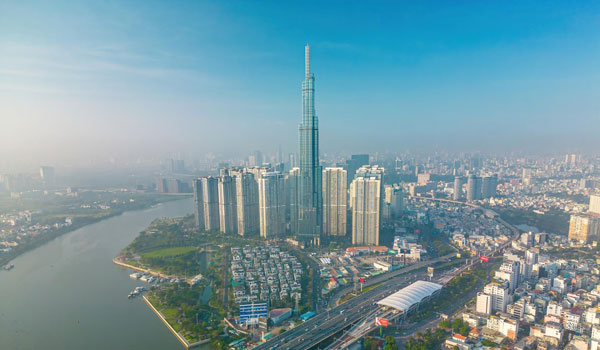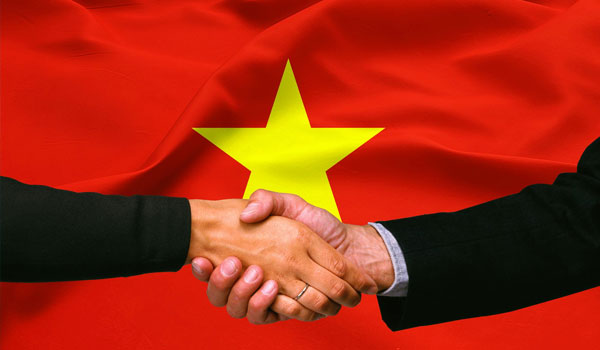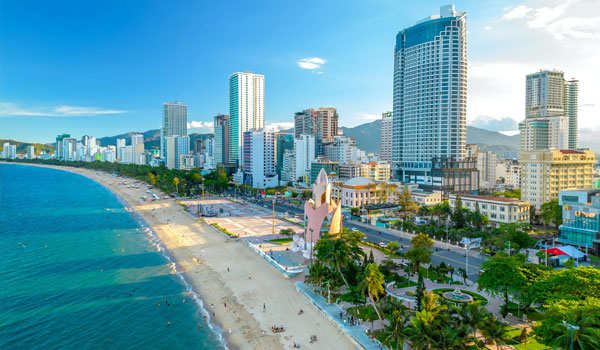Vietnam: Emerging Market Gem in Southeast Asia
Vietnam at a Glance


| GDP: | $408 billion (2022) |
| GDP Growth: | 8.0% (2022) 7.4% (2019) |
| Population (Urban Population %): |
98.2 million (39%) |
| GDP per Capita: | US$4,164 (2022) |
| Currency: | Vietnamese Dong (VND); approximately 25,400 VND per 1 USD (April 2024) |
| Land Area: | 331,690 km2 |
| Border Countries (Border km): |
China (1,281 km) Laos (2,130 km) Cambodia (1,228 km) |
| Major Cities (Population in million): |
Ho Chi Minh City (8.9) Hanoi (8.1) Hai Phong (2.0) |
Investment Highlights
01STRONG ECONOMIC GROWTH FUELED BY ROBUST FUNDAMENTALS

Vietnam's remarkable economic growth is underpinned by a combination of robust fundamentals and proactive government policies. Over the past decade, Vietnam has consistently maintained a GDP growth rate averaging around 6-7%, making it one of the fastest-growing economies globally. In 2022, despite global economic challenges, Vietnam's GDP expanded by 8.0%, outperforming many of its regional peers.
This growth is propelled by various factors, including a young and dynamic workforce, favorable demographics, and a rapidly expanding middle class. Vietnam's population, exceeding 98 million, is characterized by a median age of just 32.8 years, indicating a large and productive labor pool. Moreover, the country's urbanization rate continues to climb, driving consumption, investment, and economic diversification.
Furthermore, Vietnam's economic resilience is evident in its diversified export-oriented manufacturing sector, which contributes significantly to GDP growth. The country's strategic focus on attracting foreign direct investment (FDI) has led to the establishment of numerous industrial zones and export processing zones, fostering industrial development and technology transfer.
The Vietnamese government's commitment to economic reform and liberalization has also played a pivotal role in sustaining growth momentum. Reforms aimed at enhancing the business environment, streamlining administrative procedures, and promoting private sector participation have garnered investor confidence and stimulated domestic entrepreneurship.
02ABUNDANT NATURAL RESOURCES AND STRATEGIC LOCATION

Vietnam's strategic geographic location at the crossroads of Southeast Asia offers significant advantages for trade and investment. With a coastline spanning over 3,200 kilometers and access to key international shipping routes, Vietnam serves as a gateway to regional and global markets. The country's strategic proximity to major economies such as China, India, and ASEAN member states position it as a focal point for trade and investment flows.
Moreover, Vietnam boasts abundant natural resources ranging from agriculture and fisheries to minerals and energy reserves. The agricultural sector, which employs a significant portion of the population, contributes substantially to GDP and export earnings. Vietnam is one of the world's leading exporters of rice, coffee, seafood, and textiles, capitalizing on its fertile land and favorable climate.
In addition, Vietnam's offshore oil and gas reserves present significant investment opportunities in the energy sector. The country's coastal waters are estimated to hold substantial hydrocarbon resources, attracting international oil companies and investment in exploration and production activities.
Furthermore, Vietnam's commitment to sustainable development and environmental protection aligns with global trends, making it an attractive destination for responsible investment in renewable energy and green technologies.
03DEEPENING INTEGRATION INTO GLOBAL ECONOMY AND ENHANCED TRADE RELATIONS

Vietnam's proactive engagement in international trade agreements and regional economic integration initiatives has enhanced its competitiveness and attractiveness to investors. As a member of ASEAN, Vietnam benefits from preferential access to a market of over 650 million people and a combined GDP of over $3 trillion.
Moreover, Vietnam's participation in multilateral trade agreements such as the Comprehensive and Progressive Agreement for Trans-Pacific Partnership (CPTPP) and the Regional Comprehensive Economic Partnership (RCEP) strengthens its position as a regional economic hub. These agreements facilitate market access, tariff reduction, and trade facilitation, driving export-oriented growth and diversification of Vietnam's economy.
Furthermore, Vietnam's bilateral trade relations with key partners, including the European Union, United States, China, and Japan, continue to expand. The EU-Vietnam Free Trade Agreement (EVFTA), which entered into force in 2020, has opened new opportunities for trade and investment between Vietnam and the EU, promoting economic cooperation and market integration.
Additionally, Vietnam's proactive diplomacy and commitment to a rules-based international trading system underscore its reliability as a trading partner and investment destination. The country's stable political environment, favorable investment climate, and strategic location further enhance its appeal to global investors seeking to capitalize on emerging market opportunities in Asia.
04CONTINUOUS IMPROVEMENTS IN LEGAL FRAMEWORK AND REGULATORY ENVIRONMENT

Vietnam has embarked on comprehensive legal reforms aimed at enhancing the business environment, promoting investment, and strengthening the rule of law. Recent legislative initiatives, including the Law on Investment, Law on Enterprises, and Law on Public-Private Partnership (PPP), seek to streamline administrative procedures, protect investor rights, and encourage private sector participation.
Moreover, Vietnam's commitment to international best practices and standards is reflected in its accession to international treaties and conventions, including those related to intellectual property rights protection, trade facilitation, and investment promotion. The country's ongoing efforts to improve governance, transparency, and accountability contribute to a conducive investment climate and foster investor confidence.
Overall, Vietnam's proactive approach to legal and regulatory reform underscores its commitment to fostering a transparent, predictable, and investor-friendly business environment. As the country continues to enhance its legal framework and governance practices, it is poised to attract greater investment inflows and sustain long-term economic growth and development.
05ATTRACTIVE VALUATIONS AND GROWTH OPPORTUNITIES AMIDST GLOBAL UNCERTAINTY

Vietnam presents investors with compelling opportunities at attractive valuations, particularly in sectors poised for growth such as manufacturing, technology, and renewable energy. With relatively low entry barriers and a dynamic labor force, Vietnam offers cost-effective investment options compared to other emerging markets in the region. As global economic dynamics evolve, and supply chain disruptions reshape investment landscapes, Vietnam's resilience, adaptability, and long-term growth prospects make it an investment destination of choice for savvy investors seeking diversification and high returns. As Vietnam continues to harness its potential and capitalize on emerging opportunities, the country remains a beacon of growth and prosperity in the region.